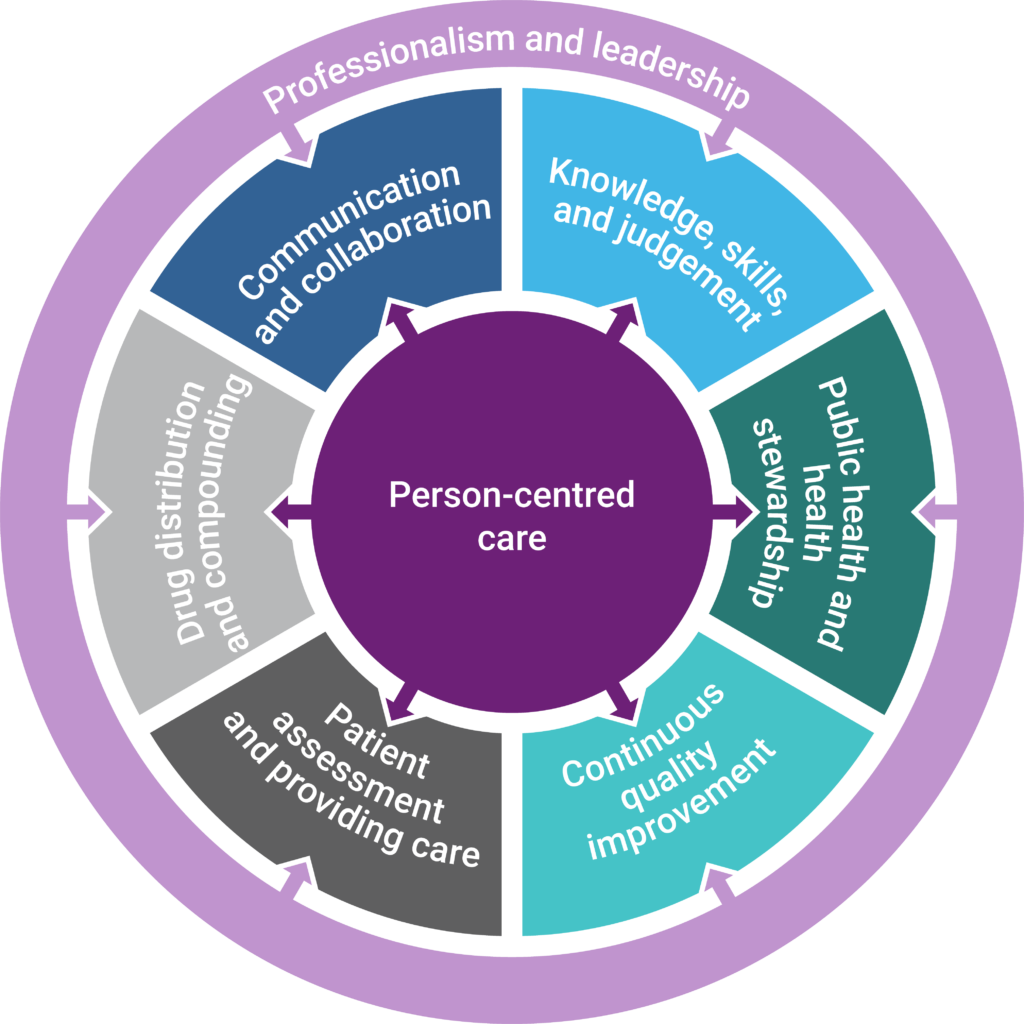
The following article was updated on August 27, 2024, to reflect the approval of the standards.
The new Standards of Practice for Pharmacists and Pharmacy Technicians (SPPPT) are categorized into eight domains important to quality pharmacy practice. These domains provide structure for the standards and to enable changes to the standards in the future.
The domain of person-centred care is foundational to every aspect of pharmacy practice. Complementary to this, the domain of professionalism and leadership is fundamental to all activities that regulated members perform.

Each domain has a statement that provides context about the standards within that domain. Each domain is divided into topics. Each topic has an outcome standard that describes the expected patient outcome that must be achieved for the standard to be met. The achievement of each outcome standard is detailed further through the inclusion of descriptive standards that provide details about activities important to achieving the required outcome.
SPPPT domains
Domain 1 – Person-centred care
Person-centred care is at the heart of the SPPPT and is foundational to every aspect of pharmacy practice. Person-centred care recognizes that each patient is an individual with their own values, needs, and health concerns. It focuses on achieving positive health outcomes for patients by including the patient as a partner in their care.
Domain 2 – Professionalism and leadership
Professionalism is demonstrated by regulated members through altruism and ethical conduct to promote the health of individuals and their communities across the continuum of care. Patients feel genuinely cared for and members of the public and colleagues have confidence, respect, and trust when a regulated member demonstrates leadership through professionalism in practice.
Domain 3 – Communication and collaboration
Effective communication creates a shared understanding through the flow of information among regulated members, patients, and individuals within a patient’s circle of care. Collaboration relies on this effective communication within a patient’s circle of care to cooperatively meet patient needs.
Domain 4 – Knowledge, skills, and judgement
Maintaining competence is a professional responsibility of regulated members. To provide safe, appropriate, and effective care, every regulated member needs to ensure that they have the knowledge and skills to make the professional judgements required to provide professional services to patients. Equally important, every regulated member must understand the limitations of their personal competence, and further, to anticipate what they don’t know.
Domain 5 – Public health and health stewardship
The health of the community is supported and promoted, and disease is better managed and prevented, when regulated members support public health. Health stewardship is the careful and responsible management of the well-being of the population.
Domain 6 – Continuous quality improvement
Safe pharmacy care relies on a culture in which all pharmacy team members are genuinely committed to ongoing improvement. Risks to patients are uncovered through a structured continuous quality improvement program that includes reporting; identifying contributing factors; and a culture of learning, not retribution, when practice incidents and near misses occur. Patients are meaningfully involved in the process when concerns are identified.
Domain 7 – Patient assessment and providing care
Patient assessment and person-centred care are a focus of the standards, rather than prescription assessment and drug distribution. The standards provide a foundation for patient assessment that emphasizes critical thinking and requires appropriate monitoring, follow up, and documentation. Based on their assessment, the standards define the expectations and requirements for the professional services that regulated members may provide, including dispensing, prescribing, and administration of drugs.
Domain 8 – Drug distribution and compounding
Drug distribution includes the technical functions of dispensing, selling, and compounding drugs. The accuracy and safety of drug distribution supports the achievement of patients’ health goals.




